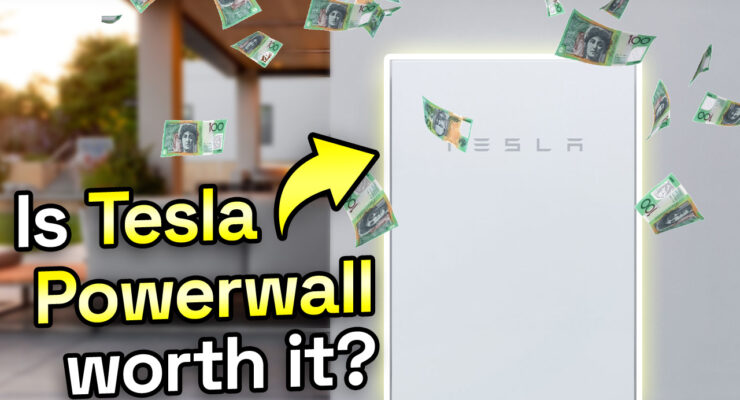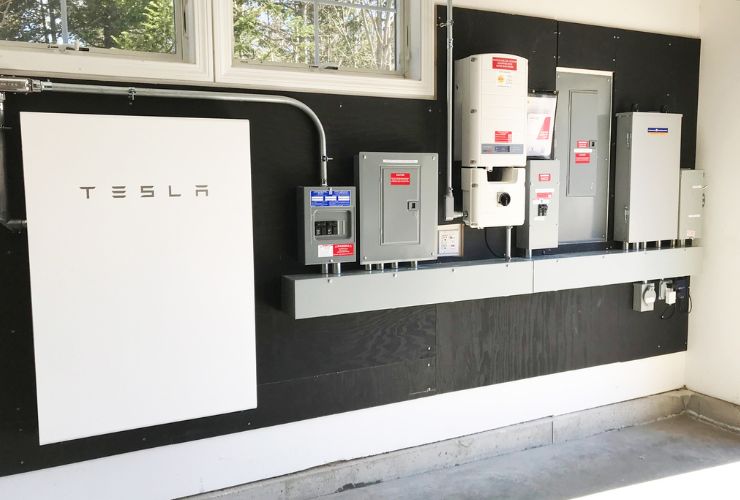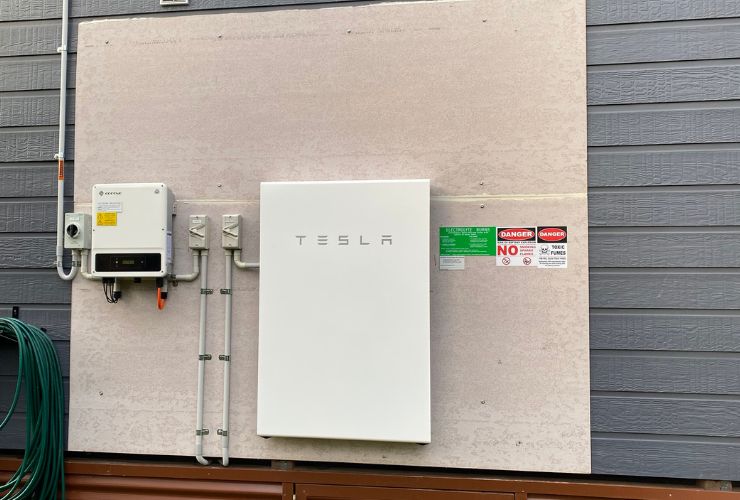
Fast read
In 2015, Tesla unveiled its Powerwall 1 home battery, a new choice for those who want to detach from the grid and rely less on conventional electricity sources. We now have the second generation of the Powerwall.
Before selecting a home storage option, it's crucial to consider the installation and energy consumption trends. A precise place must be chosen to install the battery, and the installation must also meet other criteria, like staying out of direct sunlight.
The battery is only worthwhile if the homeowner produces and consumes enough energy to justify the expenditure. A benefit occurs when the energy consumption patterns of the household match the battery's capacities.
The price of the Tesla Powerwall 2 has fluctuated in the past but currently stands at around $18,000 - $19,000 fully installed. The battery also comes with a 10-year warranty, has a round-trip efficiency of 90%, and can increase the value of a home.
Is the Tesla Powerwall worth it?
Tesla Australia asked their installer network last year to change the name of their home storage battery from Tesla Powerwall 2 to simply Tesla Powerwall. The truth is this is the second Powerwall released by Tesla. The original Tesla Powerwall, which looked funky but disappeared like a puff of smoke from the distribution channel around 2018, was the Tesla Powerwall (1). So we will continue in this FAQ to call the current product the Tesla Powerwall 2 to differentiate this model from the previous version and find out if the Tesla Powerwall 2 is worth it.
The original Tesla Powerwall 1 was released in 2o15 and disappeared in 2018 without a trace.
It is well known that Elon Musk is a pioneer in the Electric Vehicle, solar, and space exploration industries. In 2015 Elon Musk announced that Tesla would release a home battery product – the Tesla Powerwall.
Tesla is nowadays an influential brand in the electric vehicle and solar home storage battery market. So it only makes sense that Tesla has their own home battery, but is the Tesla Powerwall 2 worth it?
How much does a Tesla Powerwall 2 cost?
The price of the Tesla Powerwall 2 has frequently changed because of production and supply limitations. However, the battery entered the market in 2017 with a wholesale price of around $10,000 plus installation costs. This was a cost-effective price at the time and potentially one of the best deals on the market for a home storage battery of this size.
As demand exceeded supply, the price jumped in February 2018 to close to $11,000 wholesale. Allowing gateway and installation costs of more than $3000, this saw an installed unit sell for around $14,000.
In October 2018, the Tesla Powerwall 2 had its most significant price jump adding a further $2,500 to the previous price.
This caused the battery demand to slow down, which helped Tesla’s production and supply issues to be less severe. As a result, the price fell by about $1000 in July 2019 but has crept back up over the past 2-3 years, whereby a fully installed Tesla Powerwall is now $19,000 plus – fully installed.
While homeowners may hesitate to purchase a Tesla Powerwall 2 because of its price volatility, it may still be a good purchase.

Is a Tesla Powerwall worth it for you?
The first thing to consider is the installation. Before you think about purchasing the battery, you must make sure you have somewhere to place it.
The Tesla Powerwall 2 can be wall-mounted or floor-mounted, allowing some versatility in where it can be placed. However, remember that some cables must run from the battery to your solar panels, switchboard, and inverter. Furthermore, the Tesla Powerwall 2 can only be inside or outside a habitable room if you install a fireproof sheet on the wall.
You also need a separate smaller box called the gateway, which holds the communication elements, and again you’ll need to find a suitable location for this part of the battery.
If you can find a location that passes these requirements, you can install a Tesla Powerwall 2.
The second primary consideration to see if a Tesla Powerwall 2 is worth it is if you generate enough energy via your solar PV system to make the investment work for you. Analysing should also consider your household’s energy consumption patterns.
Use most of your electricity during the day and not much at night. A battery may not be for you in general, as you will need to regularly utilise the battery to its total capacity to achieve a worthwhile ROI.
The efficiency of the Tesla Powerwall
You should also know that the Tesla Powerwall 2 has a round-trip efficiency of 90%. This means that for every 10 kWh of electricity used to charge the battery, one can only harvest 9 kWh. The remaining 10% of power (1kWh) will be lost while charging, storing, and discharging from the Tesla Powerwall.
The Tesla Powerwall 2 is rated at 13.5kW, so if your solar power system does not export at least 12 to 15 kWh on most days, you would need to consider installing solar panels. Hence, your solar exports match the power of the Tesla Powerwall 2. If you produce more renewable energy per day than the numbers mentioned above, the Tesla Powerwall is more likely to be a worthwhile investment.

Benefits of this battery
If you desire to become independent from the grid, the Tesla Powerwall 2 is for you. This benefit provided by the battery means you can stop paying the ever-increasing electricity prices. If you become energy-independent, the value of your home can also increase.
Back-up power during a blackout is often a key reason people purchase a residential storage battery. For example, suppose your solar system is large enough to fill the Tesla Powerwall 2 quickly. Then, theoretically, you could have a three-day blackout, and your home would still have the lights on, the fridge working, and the stove cooking – at a time when all your neighbours are operating by candlelight.
Another benefit that comes with the Tesla Powerwall 2 is the warranty. Tesla promises that the Powerwall will be defect-free for 10 years from its installation date. This ensures that the battery will have an energy retention rate of 70% 10 years after installation. The length of these warranties is better than what cheaper battery brands offer for their product.
So far, the Tesla Powerwall 2 has also performed well in Australian conditions with a low warranty return rate after five years of installation timeframe.
Store more power
A fourth benefit is that one can store one’s excess solar energy. This allows you to gain more savings from solar power and lower your electricity bills even more. This is because you will be using much less power from the grid, instead using renewable energy from your solar system.
So the overall verdict to the question is whether the Tesla Powerwall is worth it – if you can afford it then it may be worth it for you, you will have a more reliable power supply and an overall lower energy bill for many years.